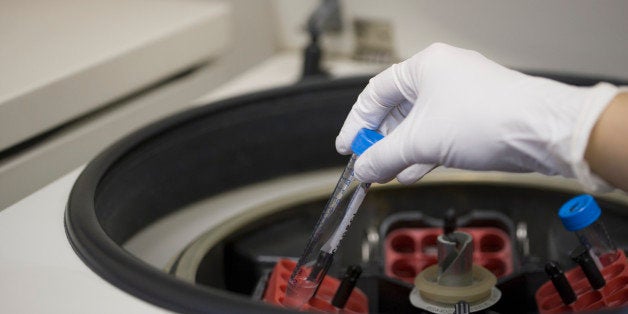
Making the decision to pump my body full of hormones in order to facilitate mass egg production in order to have a baby was not really in my five-year-plan, but it certainly took center stage a few weeks ago. My wife dutifully primed the needle both morning and night at (almost) exactly the same time 12 hours apart, and then inserted the needle in my lower abdomen area. Every woman's experience is unique, but let me tell you mine: It felt like getting a flu shot in my belly. You know that stinging sensation as the fluid goes in? That. Every morning -- and every night. By the time all was said and done, I felt about as full as an Italian family might feel enjoying a Chinese buffet the day after Christmas.
A check-in was owed every 48 to 72 hours to potentially adjust the settings going into the egg-making factory -- a.k.a. me. The gals on the east side at Overlake Reproductive Health were kind, courteous and thoughtful each time, and that made a world of difference in the type of experience my wife and I had that first week. If it had been any other way, I might have pulled my hair out.
Literally, the hot flashes made me want to pull my hair out. I'm 31. Believe me when I tell you -- I was on fire every few hours, and it was not cool. Still, the burning inferno was worth it during one of the ultrasounds when I saw that there were 19 eggs -- and counting. This information was spectacular, but all I could think about was needing a little TLC. A spa maybe. Wait, scratch that. A drink? No. My favorite black tank top? Yes.
When you consider the science of it all, the art of in-vitro fertilization is quite remarkable. Seriously, nothing about it is a meek undertaking. There are so many variables involved and any one fluctuation can change the whole game in a heartbeat. Thankfully for us, the medication dosage didn't change throughout our process, and the follicles developed at a slow and steady clip. If more medication needed to be ordered, it was a relatively simple process.
Speaking of the medication, it's expensive. There's no sugar-coating $11,000 worth of Follistim, Menopur, Ganirelex, Ovidrel, syringes and other accouterments for the IVF process, so when that large box arrives via FedEx at your doorstep, you treat it like the Egyptian gold that it is!
Thankfully for us, our insurance covered most of the medication costs. In fact, our total out-of-pocket expense for the necessary evil was a tangible $350. Now, that doesn't include clinic and doctors' fees, but it did make the other bills much more manageable.
The truth is that after undergoing two losses in 2014, we were willing to pay whatever we had to pay in order to have a more solid footing on this whole becoming a parent thing. That was, in part, why we selected genetic screening on the embryos after they were retrieved.
Choosing whether or not to screen your embryos for genetic abnormalities that might result in a miscarriage is a personal decision, and not a cheap one. The process is called Preimplantation Genetic Diagnosis, or PGD, and it's becoming much more common than in previous years. The Advanced Fertility Center of Chicago states:
Several studies have shown that overall about 50 percent of human preimplantation embryos from IVF are chromosomally abnormal. The rate of abnormalities is affected greatly by female age. Chromosomes in eggs from older women have a significantly increased rate of abnormalities...To a great extent, chromosomal abnormalities are responsible for failure of implantation of IVF embryos. Chromosomal abnormalities are also responsible for about 70 percent of miscarriages in early pregnancy.
What would you pay for peace of mind? Is the cost worth the price of knowing you have the best possible chance of success? For us it was a no-brainer. We'd already been through so much emotional heartache and nail-biting frustration over the past 18 months that the mere thought of testing the embryos before transferring brought us a sense of calm. It meant that we would have to wait an extra week before knowing if we were okay to proceed, but we would have had to wait longer than that anyway since we were freezing the embryo for transfer a month later. Really all that stood between us and a healthy pregnancy was a genetic test. So we took it.
